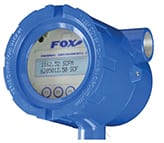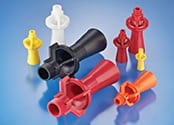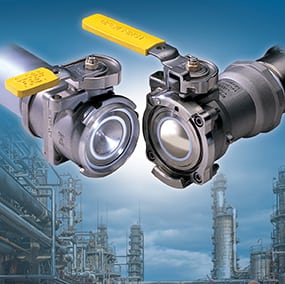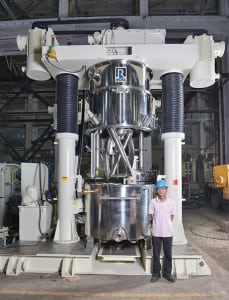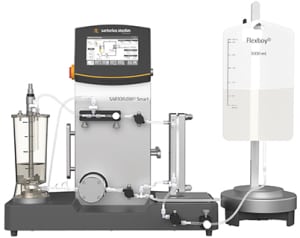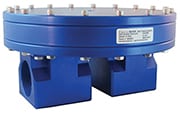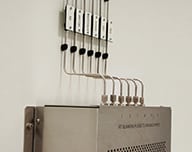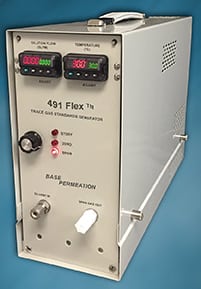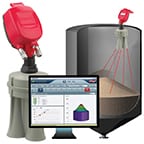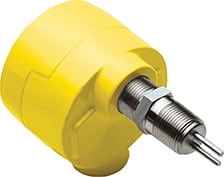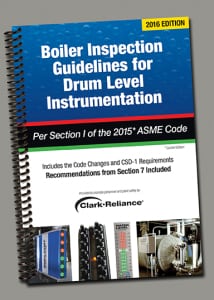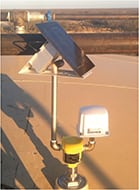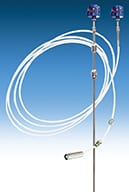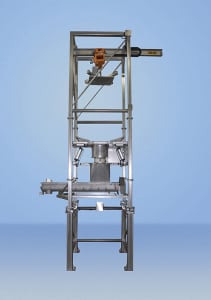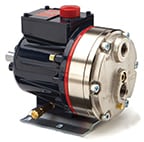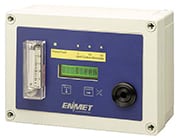New Products & Services
March 2016
To optimize networking and virtualization performances, this company has introduced a highly integrated 14-nm system on a chip (SoC) 1U rackmount network security appliance NCA-4010 (photo). Designed with optimization capabilities at the mid-range tier, NCA-4010 is driven by the Intel Xeon processor D-1518 (4-core) and D1548 (8-core) 14-nm CPU, codenamed Broadwell-DE to deliver high networking performance, large memory capacity, an external crypto accelerator, and a scalable local-area network (LAN) configuration. The 14-nm SoC integrates a platform control hub and delivers powerful memory capacity and an error-correction control-data-integrity capability. The platform design of NCA-4010 is purposely targeted on networking and virtualization applications for enhanced performance at mid-level ownership cost. — Lanner Electronics Inc., New Taipei City, Taiwan
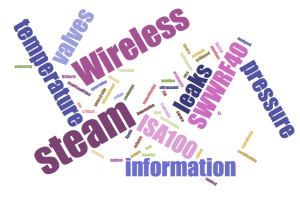 This company’s SWWRF40 wireless steam-trap monitor has successfully achieved ISA100 Wireless certification from the International Society of Automation (ISA). The device monitors gas and steam leaks, temperature, pressure and other relevant information related to valves and the steam system. The SWWRF40 wirelessly transmits temperature, pressure and ultrasound data, which is analyzed to determine the status of steam valves. It also enables fast response to undesirable events, such as steam leaks. The instrument’s ISA100 Wireless compliance assures robust, secure and reliable transmission of critical asset-condition information. — Bitherm S.L., Madrid, Spain
This company’s SWWRF40 wireless steam-trap monitor has successfully achieved ISA100 Wireless certification from the International Society of Automation (ISA). The device monitors gas and steam leaks, temperature, pressure and other relevant information related to valves and the steam system. The SWWRF40 wirelessly transmits temperature, pressure and ultrasound data, which is analyzed to determine the status of steam valves. It also enables fast response to undesirable events, such as steam leaks. The instrument’s ISA100 Wireless compliance assures robust, secure and reliable transmission of critical asset-condition information. — Bitherm S.L., Madrid, Spain
The Gas-SelectX gas-selection feature of the FT1 thermal mass flowmeter (photo) has been expanded to include more pure gases. The 11 available pure gases for the device are: air, argon, butane, carbon dioxide, helium, hydrogen, methane, natural gas, nitrogen, oxygen and propane. Additionally, the Gas-SelectX feature includes a new three-gas mix option, which allows the user to choose any three pure gases (excluding natural gas) from the menu and mix them in 1% increments to total a 100% custom mixture. These features make the FT1 suitable for measuring digester gas, liquefied petroleum gas (LPG) and a variety of biogases. — Fox Thermal Instruments, Inc., Marina, Calif.
Eductor nozzles are often used to agitate the contents of tanks to prevent separation and sedimentation. If the chemicals are aggressive or stored at higher temperatures, eductors made from brass or stainless steel are typically used. Now, this new range of polyvinylidene difluoride (PVDF) eductors (photo) are a viable alternative to the more expensive stainless models. PVDF (Kynar) is a fluoroplastic that is extremely chemical-resistant and boasts superior heat resistance compared to many other plastics. The eductors are submerged inside the tank and the motive liquid is pumped under pressure though the discharge orifice. Depending on the model and the operating pressure, the volume of liquid discharged from the eductor will be up to four or five times greater than the volume of motive liquid being pumped. This highly efficient operation reduces energy use and therefore cuts costs, says the company. — The Spray Nozzle People (Bete Ltd.), Lewes, U.K.
Epsilon dry-disconnect couplings (photo) are designed for use in critical in-plant and chemical-transfer applications in pharmaceutical manufacturing. Examples of volatile, hazardous or high-value pharmaceutical compounds whose transfer can benefit from the use of Epsilon disconnects include dichloromethane, toluene, ammonia and pharmaceutical slurries. Epsilon products utilize ball valves rather than poppets to facilitate the opening and closing of the coupling, which allows a convex ball to seat with a concave ball when the valve is opened, producing a straight-through flow path that creates no areas where chemicals can nest. The result is fluid transfer that experiences no reduction in flowrate while virtually eliminating the occurrence of product spills when the coupling is disconnected. A series of five independent and redundant mechanical locks also prevents the Epsilon coupling from becoming accidentally disconnected, which removes the threat of unintentional spills and releases. Epsilon couplings are constructed of 316 stainless steel or Hastelloy, and are available in sizes ranging from¾ to 3 in. — OPW Engineered Systems, Hamilton, Ohio
This company has expanded its most advanced planetary mixer line, the PDDM (photo), to include larger working capacities up to 750 gal. The PDDM is a multi-agitator mixer featuring two planetary stirrer blades and two high-speed disperser shafts. Designed for highly viscous and highly filled applications, the hybrid system can quickly incorporate large amounts of dry ingredients into thick or sticky liquid, and apply intense shear to achieve a smooth and uniform consistency. The PDDM is rated for vacuum operation up to 29.5 in. Hg and includes a jacketed change-can vessel, sight and charge ports on the cover and an automated lift for raising or lowering the agitators. The mixer is usually supplied with a discharge system for fast and convenient transfer of the finished product. — Charles Ross and Son Co., Hauppauge, N.Y.
SartoFlow Smart (photo) is a new benchtop crossflow system for optimized ultra- and diafiltration applications. It can be used in many downstream processes, such as purification of vaccines, monoclonal antibodies and recombinant proteins. The system is suitable for flexible use in laboratory environments for process development and clinical trials, as well as for cGMP environments. The system is equipped with a low-shear four-piston membrane pump that enables high product yields. In addition, the pump provides a wide range of flowrates, allowing users to choose membrane surface areas ranging from 50 cm² to 0.14 m². The crossflow system is supplied with the company’s DCU-4 control unit, which, when combined with the company’s BioPAT SCADA, MFCS-4 software, provides data logging and export capabilities. Its touchscreen offers instant access to all critical process parameters and displays control and alarm functions. A logbook function stores alarms, setpoints and user logs. — Sartorius Stedim Biotech, Aubagne, France
This company’s dome-loaded vacuum regulators are now available in an anodized aluminum version (photo). Previously, the regulators were only available in stainless steel or polyvinyl chloride. The lightweight, corrosion-resistant aluminum models are suitable for many vacuum applications, such as extrusion and forming systems, casting, molding and dehydration. The regulators provide accurate and precise control of vacuum pressure with just one moving part — a large, sensitive diaphragm that directly seals against a field of parallel orifices, acting as both the vacuum-sensing element and the valve. This design eliminates the internal friction of traditional vacuum regulators, which use a spring-loaded diaphragm to modulate a sliding valve shaft. — Equilibar, LLC, Fletcher, N.C.
The new MultiPort inlet selector (photo) is now available for this company’s IGA and XEMIS series gas-sorption analyzers. MultiPort offers expansion of the number of gases that can be simultaneously connected and the level of automation available. There are connections for up to 12 gas species and control is integrated within HIsorp.NET software suite. Multiport not only allows the user to determine consecutive gravimetric-sorption isotherms with more species at one or more gas temperatures, but also offers the user full control of the inlet for advanced method development. — Hiden Isochema, Warrington, U.K.
This company’s line of controllers for ultrasonic direct-drive motors and positioning stages offer responsiveness for a range of user requirements, including precision positioning and handling. The small-footprint C-877.1U11 single-axis controller (photo) and low-cost two-axis controller are among the product line’s offerings. Also available is the new C-867.262 multi-phase controller, which allows for extremely smooth motion with velocities below 1µm/s, a critical feature for microscopy and surface nano-metrology. The controllers are delivered with extensive software packages, including dynamic libraries for Windows and Linux operating systems. In addition, a powerful macro programming language is available for automation tasks and standalone operation. — Physik Instrumente (PI) LP, Auburn, Mass.
The 491Flex Calibration Gas Standards Generator (photo) is an update of the 491M manual system, retaining the modular construction and expandability of the previous model, but replacing the analog controls with the computer-controlled FlexStream system. Other features include capabilities for automation and expandability, as well as electronic mass-flow control and full PID temperature control. The 491Flex uses permeation (or diffusion) tubes as the component compound source for creating very low-concentration mixtures. — KIN-TEK Analytical, La Marque, Tex.
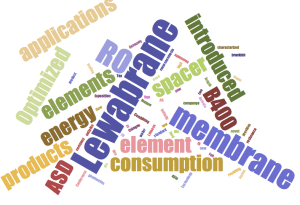 Introduced at the Membrane Technology Conference & Exposition (Feb. 1–5; San Antonio, Tex.), the reverse-osmosis (RO) elements from this company’s Lewabrane product line now feature a novel feed spacer used in the membrane element. The spacer provides for optimized flow in the RO element, resulting in lower energy consumption. Combining it with the Lewabrane RO membrane makes products suitable for numerous applications. Initially, two new products are to be introduced: Lewabrane B400 LE ASD and Lewabrane B400 FR ASD. Optimized for applications in brackish water, these elements have standard geometries (40-in. length, 8-in. dia.) and are characterized by very low energy consumption and high fouling resistance, says the company. — Lanxess AG, Cologne, Germany
Introduced at the Membrane Technology Conference & Exposition (Feb. 1–5; San Antonio, Tex.), the reverse-osmosis (RO) elements from this company’s Lewabrane product line now feature a novel feed spacer used in the membrane element. The spacer provides for optimized flow in the RO element, resulting in lower energy consumption. Combining it with the Lewabrane RO membrane makes products suitable for numerous applications. Initially, two new products are to be introduced: Lewabrane B400 LE ASD and Lewabrane B400 FR ASD. Optimized for applications in brackish water, these elements have standard geometries (40-in. length, 8-in. dia.) and are characterized by very low energy consumption and high fouling resistance, says the company. — Lanxess AG, Cologne, Germany
Acoustics-based device monitors uneven topography
The BinMaster 3D Level Scanner (photo) uses non-contact, dust- penetrating technology to detect solid material surfaces. It provides early warning of surface irregularity, the development of cones, or sidewall buildup in bins and vessels, and is suitable for pellets, granular and powdered materials and other bulk solids in a wide array of chemical process industries (CPI) applications. This advanced, acoustics-based technology measures multiple points within the bin, and performs well in powders and bulk solids enclosed in tanks, silos and warehouses, as well as open bins and piles. With a measuring distance of up to 200 ft, this device uses 3-D mapping capabilities to provide a visual representation of bin contents, detecting irregular material surfaces and providing highly accurate bin-volume calculations. Communications include 4–20-mA HART, Modbus RTU, TCP/IP and RS-485. It has the following hazardous-location classifications: CFM Intrinsically Safe Class I, II, Division I, Groups, C, D, E, F and G (U.S. and Canada). It is self-cleaning, requires minimal maintenance and has a variety of extensions and configurations to allow it to meet a range of challenging applications, says the company. — BinMaster, Lincoln, Neb.
Interface detector supports hydrocarbon separation
The FlexSwitch FLT93S flow-level-temperature switch (photo) is a dual-function, insertion-style instrument that can identify the interface between any type of media, including foam, emulsion layers, liquids and slurries. The FLT93S switch allows one instrument to control two different product interfaces. Two or more switches can be used to control product discharge and intake at specified points. It offers either flow/temperature sensing or level/temperature sensing in a single device. With its advanced thermal-dispersion sensing technoogy, the FLT93S switch provides precision interface detection of fluids, helping users to manage the separation of crude oil, gas and water during petroleum-recovery and refining operations using either two-phase (oil/gas and condensate) or three-phase (oil, gas and water) separation tanks. It can be used in tanks, for monitoring, controlling and alarming of flowrates or levels of critical fluid layers, such as emulsion layers, foams, liquids and slurries. Unlike density displacers, which are often used for level and interface control, the FLT93S switch relies on specific heat-transfer properties of the media to identify the interface of different products, says the company. Level/interface accuracy is±0.25 in. and measurement repeatability is±0.125 in., says the company. The standard unit withstands operating temperatures from -40 to 350°F, and an optional configuration is available for temperatures from –100 to 850°F. — Fluid Components International LLC, San Marcos, Calif.
Ultrasonic level transmitter measures liquids and slurries
The Sitrans LU150 (photo) is a non-contacting ultrasonic transmitter with a range of 16 ft. The two-wire, 4–20-mA loop-powered transmitter incorporates the sensor and the electronics in a single compact unit. It can be used for continuous level measurement of liquids, slurries and bulk materials in both open and closed vessels. It is designed primarily for use in the water, wastewater and energy-management industries. The Sitrans LU150 has a rugged, fully encapsulated polyvinylidene fluoride (PVDF) transmitter that is resistant to corrosion, chemicals and extreme shock. With only two cables to be connected, the Sitrans LU150 can be installed quickly and easily. The company’s Sonic Intelligence signal-processing software delivers reliable measurement readings by differentiating between the true material level and echoes, says the manufacturer. It has an accuracy of±0.025%, with a measuring range of 0.25–5 m, and an operating range of –30 to 60°C. It is suitable for use in chemical storage vessels, filter beds, mud pits, liquid storage vessels and food applications. — Siemens, Atlanta, Ga.
Advanced transmitters improve level measurement
The Jupiter Model JM4 magnetostrictive level transmitter (photo) is available as a direct-insertion option or an external-mount option on any Orion magnetic level indicator or modular instrumentation bundle. The JM4 provides innovative features to ensure safe, simple measurement in both total and interface level applications, says the company. The magnetostrictive transmitter features improved signal-to-noise ratio, a full graphic local user interface, HART 7.0 (Foundation Fieldbus is available), local waveform capture and an intuitive device-type manager that allows for remote configuration, trending and diagnostics. The JM4 is said to be the first magnetostrictive transmitter to offer a field-removable head, which allows for easier transmitter maintenance and troubleshooting without disrupting the process. Head rotation of 310 deg provides greater accessibility to operate the JM4’s onboard graphical interface. The remote-mount option allows the transmitter head to be attached to the probe via a flexible cable (available in 3- and 12-ft lengths), allowing for easier viewing when spatial constraints exist. — Orion Instruments, Baton Rouge, La.
This radar level-measurement device is for bypass operations
The Optiwave 1010 FMCW radar level device is a two-wire, loop-powered HART transmitter designed for continuous level measurement of liquids in bypass applications in a variety of industries, including chemical, power, water and wastewater. When combined with the company’s BM 26 Advanced bypass chambers and magnetic level indicators, this device adds a 4–20-mA output to the mechanical devices. A combination can be ordered as a single package (called the BM 26 W1010), says the company. This device can also be welded onto any bypass chamber with internal diameter of 1.5–2 in. (38–56 mm). It has a measurement accuracy of±0.2 in. (5 mm), and it offers better accuracy in bypass applications, says its maker, because while reed chain and magnetostrictive level detectors measure the float position (which depends on product density), radar measures the liquid surface directly. — Krohne Messtechnik GmbH, Duisburg, Germany
This submersible pressure transducer can travel
The AST4510 submersible pressure transducer (photo) measures liquid level in tanks. This instrument is designed with stainless steel and Hytrel materials, and is suitable for use in both stationary and mobile tank applications. Mobile applications may include tanks that are being transported between locations at a construction site, chemical totes that are moved during chemical process operations, well-site injection chemicals, as well as tanks located on ships and train cars. The AST4510 comes standard with a 0.5-in. NPT male conduit connection at the base of the cable connection. If the tank is likely to experience turbulent conditions due to an inlet/fill pipe or the use of an agitator, the transducer can be installed with a metal or plastic conduit over the cable, to safeguard against sensor movement within the tank, says the company. — American Sensor, Mt. Olive, N.J.
Publication supports level sensor use in boiler drums
This company recently released the new 2016 edition of its guidebook, entitled “Boiler Inspection Guidelines for Drum Level Instrumentation” (photo). This informative resource for boiler drum-level instrumentation concisely presents the latest ASME Section 1 Code, says the company. It provides handy, on-the-job reference materials for boiler operators, and includes ASME Code requirements for water columns, water-gage valves, gage glass, remote level indicators, magnetic water-level gages, and water-column-isolation shutoff valves. It incorporates the 2015 ASME Code changes and CSD-1 requirements, as well as recommendations from Section 7. The handbook also lists the most common non-compliant drum-level equipment arrangements and suggests alternative solutions, says the company. Its size, spiral binding and laminated pages make it appropriate for in-plant reference and referral. It is available free of charge to qualified recipients. — Clark-Reliance, Strongsville, Ohio
Electronic level sensor detects changes in buoyancy
The Magnetrol Digital E3 Modulevel Displacer Level Transmitter (photo) is a liquid level-measurement and control device for a variety of CPI applications. The electronic-displacer level-transmitter technology detects and converts changes in buoyancy force, caused by a change in liquid level, into a stable output signal. These forces act upon the spring-supported displacer, causing vertical motion at the core within the Macro Sensors’ linear variable differential transformer, says the company. As the core position changes with liquid level, voltages are induced across the secondary windings of the sensors. These signals are processed in the electronic circuitry and used to control the current in the 4–20-mA current loop. — Macro Sensors, Pennsauken, N.J.
Open-architecture wireless system enables sensor choice
Monitoring level in tanks is a common wireless application, and when used in upstream pumping, oil-and-gas, wastewater and other industrial applications, it can help to eliminate run-outs and overflows while optimizing and ensuring the integrity of the operations. The SignalFire Remote Sensing System (photo) integrates an open architecture mesh network, which allows users to choose the preferred sensor type for an application, and to mix different sensor types in the same network. By comparison, most tank level-monitoring systems limit sensor choice, says the company. Depending on the conditions of the operating environment and tank contents, the ideal sensing technology might be a float device, pressure sensor, ultrasonic sensor, piezoresistive sensor, or one based on air-guided wave radar. The SFRSS communicates with and powers virtually any sensor with a 4–20-mA, 1.5-V, Modbus, HART, digital I/O and other analog and digital interfaces, says the company. In a typical application, the SignalFire wireless nodes interface with a standard sensor, providing power for the sensor and connectvity to a gateway located at a central location where the data are concentrated. Because the SFRSS mesh network operates at lower frequencies, it can communicate at ranges of up to 3 miles between nodes, and it is significantly less sensitive to foliage, obstructions and moisture when compared to traditional wireless sensors, according to the manufacturer. — SignalFire, Hudson, Mass.
Electronic level sensor detects changes in buoyancy
The Total Tank Level Measurement System (photo) incorporates magnetostrictive sensing technology and multivariable functionality. The system’s digital Modbus output measures total level, interface level and temperature from an explosion-proof housing. The system features five temperature-sensor outputs, distributed over the active length of the system’s polymer and stainless-steel probe. The rugged and flexible probe is available in lengths up to 50 ft. It is also available in a rigid Type 316 stainless steel version. The system’s intrinsically safe, explosion-proof design and all-welded construction makes it suitable for use in oil-and-gas, chemical and petrochemical storage tank and inventory-control applications, says the company. It has an accuracy of 0.01% of measured span (less than 1 mm absolute), over the full measurement range. It meets FM and FMc hazardous-area approvals and requires minimal maintenance. — Ametek Drexelbrook, Horsham, Pa.
The Material Master bulk-bag discharging, weighing and feeding system (photo) features heavy-duty stainless-steel construction with an integral screw feeder and loss-in-weight load cells for material batching. The unit includes a 6-in. square structural-tube lower frame and a bulk-bag support pan for operator safety. The system’s Flo-Master bulk-bag massaging system promotes material flow, while a powerful Flo-Lock slide gate halts material flow for partial bag discharge. — Material Transfer & Storage (MTS), Allegan, Mich.
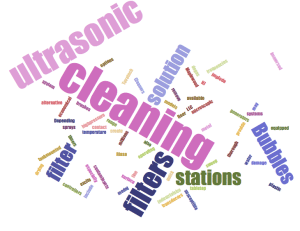 This line of ultrasonic cleaning systems for filters range from tabletop to industrial-size floor models, each of which can provide a quick, thorough cleaning to filters. Ultrasonic filter cleaning is an economical alternative to cleaning with high-pressure water sprays or brushes, especially for metal and plastic filters that are very susceptible to damage. Cleaners are equipped with ultrasonic generators operating at frequencies that excite tank-mounted transducers to create millions of microscopic bubbles in the cleaning solution. Bubbles implode on contact with the filter to remove contaminants from any surface immersed in the ultrasonic cleaning solution. Depending on the model, the cleaning system may include timers, temperature controllers and sweep and degas options. Rinse stations and drying stations are also available. — Tovatech, LLC, Maplewood, N.J.
This line of ultrasonic cleaning systems for filters range from tabletop to industrial-size floor models, each of which can provide a quick, thorough cleaning to filters. Ultrasonic filter cleaning is an economical alternative to cleaning with high-pressure water sprays or brushes, especially for metal and plastic filters that are very susceptible to damage. Cleaners are equipped with ultrasonic generators operating at frequencies that excite tank-mounted transducers to create millions of microscopic bubbles in the cleaning solution. Bubbles implode on contact with the filter to remove contaminants from any surface immersed in the ultrasonic cleaning solution. Depending on the model, the cleaning system may include timers, temperature controllers and sweep and degas options. Rinse stations and drying stations are also available. — Tovatech, LLC, Maplewood, N.J.
Previously rated at 1,000 psi maximum discharge pressure, Hydra-Cell D10 Series sealless pumps with metallic pump heads (photo) can now operate at pressures up to 1,500 psi. Used for a wide range of processing applications and in manufacturing plants, Hydra-Cell D10 models have a flow capacity of 4.26 gal/min with a motor speed of 790 rpm when performing at the higher pressure rating. Spring-loaded, horizontal-disk check valves and the sealless design enable model D10 pumps to handle viscous fluids and those containing abrasive particulate up to 500 μm in size. The D10 also features the patented Kel-Cell technology so that in the event of a closed or clogged inlet condition, the D10 will run dry indefinitely without damage to the pump. — Wanner Engineering, Inc., Minneapolis, Minn.
 The Litesizer 500 is a light-scattering device for determining the size and stability of nanoparticles and submicroparticles in liquids, allowing for optimization of particle systems by revealing how they change with time, pH, temperature and concentration. The Litesizer 500 determines particle size, zeta potential and molecular mass by using light-scattering technology in combination with transmittance measurements. The instrument’s software features a simple user interface where input parameters, results and analysis are all on a single page. In addition, advanced algorithms in the Litesizer’s firmware technology allow users to resolve several different particle sizes in a single suspension, and a patented technology allows for very robust measurements of zeta potential. — Anton Paar GmbH, Graz, Austria
The Litesizer 500 is a light-scattering device for determining the size and stability of nanoparticles and submicroparticles in liquids, allowing for optimization of particle systems by revealing how they change with time, pH, temperature and concentration. The Litesizer 500 determines particle size, zeta potential and molecular mass by using light-scattering technology in combination with transmittance measurements. The instrument’s software features a simple user interface where input parameters, results and analysis are all on a single page. In addition, advanced algorithms in the Litesizer’s firmware technology allow users to resolve several different particle sizes in a single suspension, and a patented technology allows for very robust measurements of zeta potential. — Anton Paar GmbH, Graz, Austria
CO-Guard (photo) is a compact, user-friendly monitor for compressed-air-line carbon monoxide (CO). The instrument incorporates a rotameter for confirmation of proper airflow, a backlit digital display and a highly specific electrochemical CO sensor for trouble-free and reliable operation. With simple use and installation, CO-Guard is designed for use in a wide variety of applications, ranging from automotive paint-spray operations to wood finishing. This monitor can be used in virtually any commercial or industrial process that requires CO monitoring of compressed breathing air for personnel working in such operations. The device covers a detection range of 0 to 50 parts per million (ppm) CO, with three adjustable alarms (5, 10 and 20 ppm CO). — Enmet Corp., Ann Arbor, Mich.
